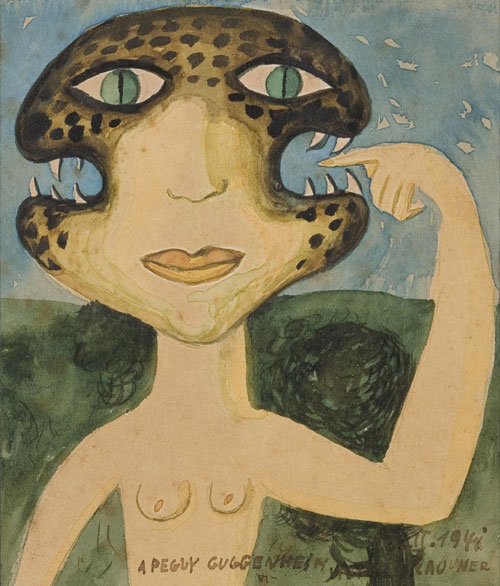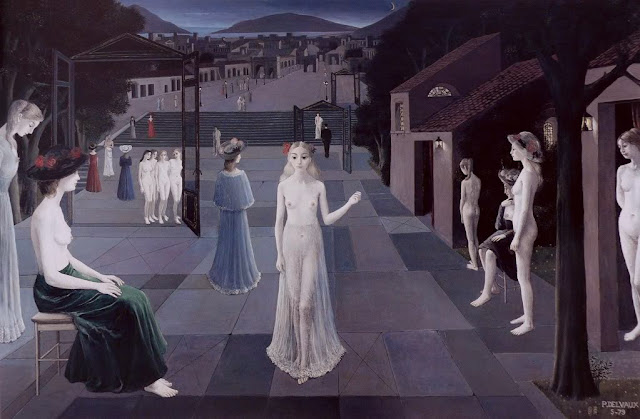

Victor Brauner (1903-1966)
Brauner joined the Paris Surrealists in 1933, contributing to several group exhibits and publications. His paintings of the period, including The Door II (1932), At Dusk (1938) and Fascination (1939), address preoccupations from the artist's dreams and subconscious.Wolf Table (1939), a Surrealist object, was made from a wooden bench, with the head, tail and testicles of a fox. During the 1940s, Brauner experimented with works that incorporated natural fibers and melted wax on wood: The Ideal Man (1943) and The Night (1946). His later paintings reveal an interest in mythology, as well as influences from American Indian and Mayan cultures. Some examples are Deep Sources (1946), Over There (1949) and Memory of Reflexes (1954).
Paul Delvaux (1897-1994)
Influenced by de Chirico's Metaphysical paintings, as well as Flemish Expressionist art, Delvaux's canvases capture a dream world of reclining female nudes, sleepwalking men, and exotic Romanesque landscapes. Often juxtaposing daytime with night-time, interior rooms with exterior landscapes, or modern characters in classical settings, the artist created a unique surrealist blend of Freudian symbolism and child-like fantasies. Though remaining independent of any one artistic movement, Delvaux exhibited alongside fellow Belgian René Magritte, and took part in the second international Surrealist exhibition at the Galerie des Beaux-Arts in Paris in 1938. Among his many memorable paintings are Sleeping City (1938), The Phases of the Moon (three versions; 1939, 1941 & 1942), Anxious City(1941), Congress (1941) and Solitude (1955).









